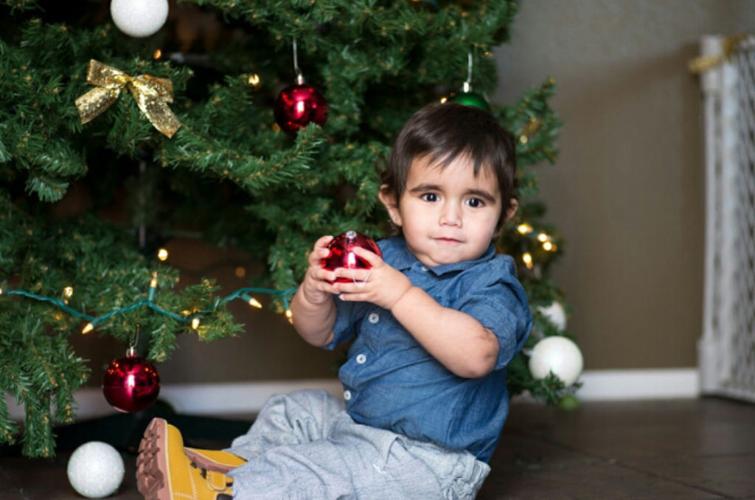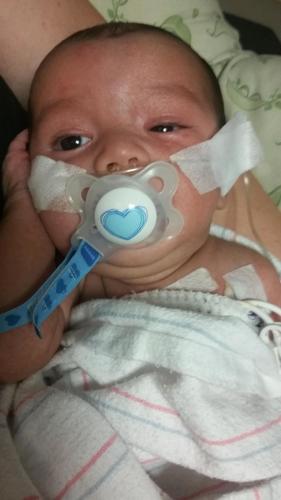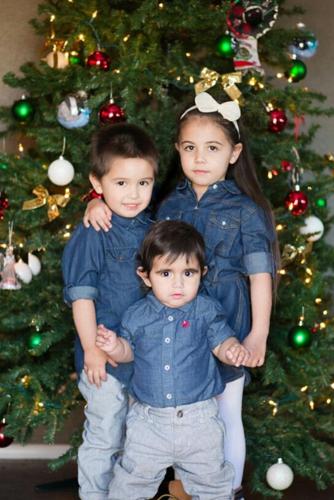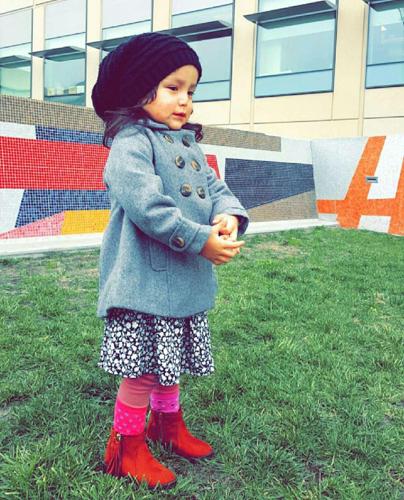By the time Angel Cortez-Pirie’s family discovered he had no immune system — a condition often called “bubble boy disease” — he was too sick for the treatment he’d need to get well.
As a result, Angel spent eight months hospitalized at Phoenix Children’s Hospital at an expensive and likely avoidable cost of $2 million, billed to Arizona’s Medicaid program.
Angel is one of the two to four Arizona babies born with Severe Combined Immunodeficiency (SCID) every year. Most babies survive the rare disorder if screened for it and treated as newborns, the Maryland-based Immune Deficiency Foundation says. But Angel was not screened for the disease when he was born on May 6, 2015.
Ninety percent of newborns in the U.S. are screened for SCID, but not babies born in Arizona, unless they are born on the Navajo Reservation, which has had screening since 2006. Babies like Angel, who have SCID that is not detected right away, face large medical bills and higher mortality rates than those screened as newborns.
The U.S. Department of Health and Human Services put SCID on its list of recommended core newborn screenings in 2010. In 2014, efforts to add an SCID test to newborn screening in Arizona failed. Now, there’s another push.
Gov. Doug Ducey in his 2017 State of the State speech said the 86,000 or so babies born in Arizona annually should be automatically screened for SCID, which affects up to 100 U.S. newborns per year.
A recently introduced state bill — SB 1368 — would provide a funding mechanism to make that happen. On Wednesday, Angel’s mother and other advocates will be at the Legislature to urge passage of the bill.
Higher-risk population
While the risk of SCID in the general population is one in 55,000 live births, the risk is higher for Native American and Hispanic people, said Dr. Cara Christ, director of the Arizona Department of Health Services.
In Native American populations, the risk is as high as one in 2,000 live births, and among Hispanics the risk is one in 25,000, a 2014 state Newborn Screening Advisory Committee analysis found.
“The department supports this newborn screening fully,” Christ said. “The key is ensuring there are enough funds.”
Arizona, Louisiana and Indiana are the only states that do not mandate newborn SCID screening.
Through its newborn screening panel, Arizona looks for 30 disorders. SCID would be the 31st .
Former Arizona Department of Health Services Director Will Humble said he became convinced that SCID should be added to Arizona’s screening in 2014 because of the high-risk population in Arizona, the importance of the diagnosis timing, and because the cost benefits are clear.
“The cost-benefit ratio was almost five, meaning that for every dollar of costs to provide SCID screening, there will be about $5 worth of benefits, such as lower treatment costs,” said Humble, now a division director at the University of Arizona’s Health Sciences Center. “But the compelling thing for me was the dramatically better outcomes that are possible with early treatment.”
$6 per baby
The current proposal was introduced by Sen. Sylvia Allen, R-Snowflake, and was assigned to the Senate’s Health and Human Services Committee. It is scheduled for a hearing Wednesday afternoon.
The cost of SCID screening is $6 per baby, which is an estimated $513,000 per year in money the state expects to recoup from hospitals and insurers.
Allen’s bill would raise the fee for the state’s automatic first newborn screening panel from $30 to $36.
The Arizona Health Care Cost Containment System, the state’s Medicaid program, would be billed an estimated $368,000 in screening costs, since most Arizona births are covered by AHCCCS. The state would pay $120,000 of that and the U.S. government would pay the remainder, agency deputy director Beth Kohler said. AHCCCS officials support the screening.
The cost is a bargain when compared with the hospital bills of babies whose condition is diagnosed late, said Dr. Cindy Salm Bauer, an allergy and immunology specialist at Phoenix Children’s Hospital. “They have horrendous hospital stays,” Bauer said.
In contrast, newborns who test positive for SCID can be given interventions that improve their chances. Those include isolation, antibiotics, antifungals, immunoglobulin replacement, and most importantly, hematopoietic stem-cell transplantation from sources like bone marrow, peripheral and cord blood.
“If they are screened and they don’t get infections, they can be treated and have a healthy, normal life,” Immune Deficiency Foundation founder and president Marcia Boyle said.
“It is a pediatric emergency…There are children who never even get to a diagnosis. They pass away before anyone even understands what happened to them."
The cost of early treatments can be as low as $50,000 in the first few months of life, compared with hospital bills that can run into the millions for later interventions, the foundation says.
“Bubble boy”
Rachael Pirie had heard of the ”bubble boy” growing up. It was a shock, she said, to learn her son had the same condition.
David Vetter, a Houston boy born in 1971, became known as the “bubble boy” because he lived in a protected bubble enclosure at Texas Children’s Hospital.
When David was born, a born-marrow transplant from an exact match was the only fix for SCID. But no one in his family was an exact match. David’s life inspired a 1976 movie starring John Travolta, “The Boy in the Plastic Bubble.”
Science eventually advanced to where SCID could be treated without a perfect bone-marrow blood match. David had a transplant with a donation from his sister, but died four months later at the age of 12. He’s credited with raising awareness of SCID, providing the impetus for newborn screening and furthering medical advances that have improved survival rates.
For Angel, the diagnosis did not mean living in a bubble, though the conditions were close. The 6-pound infant was in isolation in Phoenix Children’s, and to see him, his parents had to scrub in and wear surgical masks and gowns. Pirie was told she could no longer breastfeed her son.
More than once, the family thought he would die. Angel has since had two bone-marrow transplants, the most recent on Feb. 22. Though he’s home now, he continues to struggle and has been hospitalized twice since March.
Misdiagnosis
Erica Billy’s daughter, Ava George, spent the months after her 2013 birth constantly at the ER or the doctor and was misdiagnosed with leukemia. She was not diagnosed with SCID until she was 5 months old and extremely ill.
“We almost lost Ava. The first five months of her life were a nightmare,” Billy said. “Luckily, Ava’s grandmother works in Tuba City (on the Navajo Reservation) and the doctor there told us to get a second opinion, because it looked like SCID.”
Ava, who lives in Chandler, spent eight months hospitalized in San Francisco and had a bone-marrow transplant in 2014. But she is still having problems, so she’ll have another transplant in March.
Billy is not sure the exact cost of the medical care, which is covered by AHCCCS, but says it has reached $2 million.
Like Pirie, Billy will be at the Legislature Wednesday to urge newborn screening.









